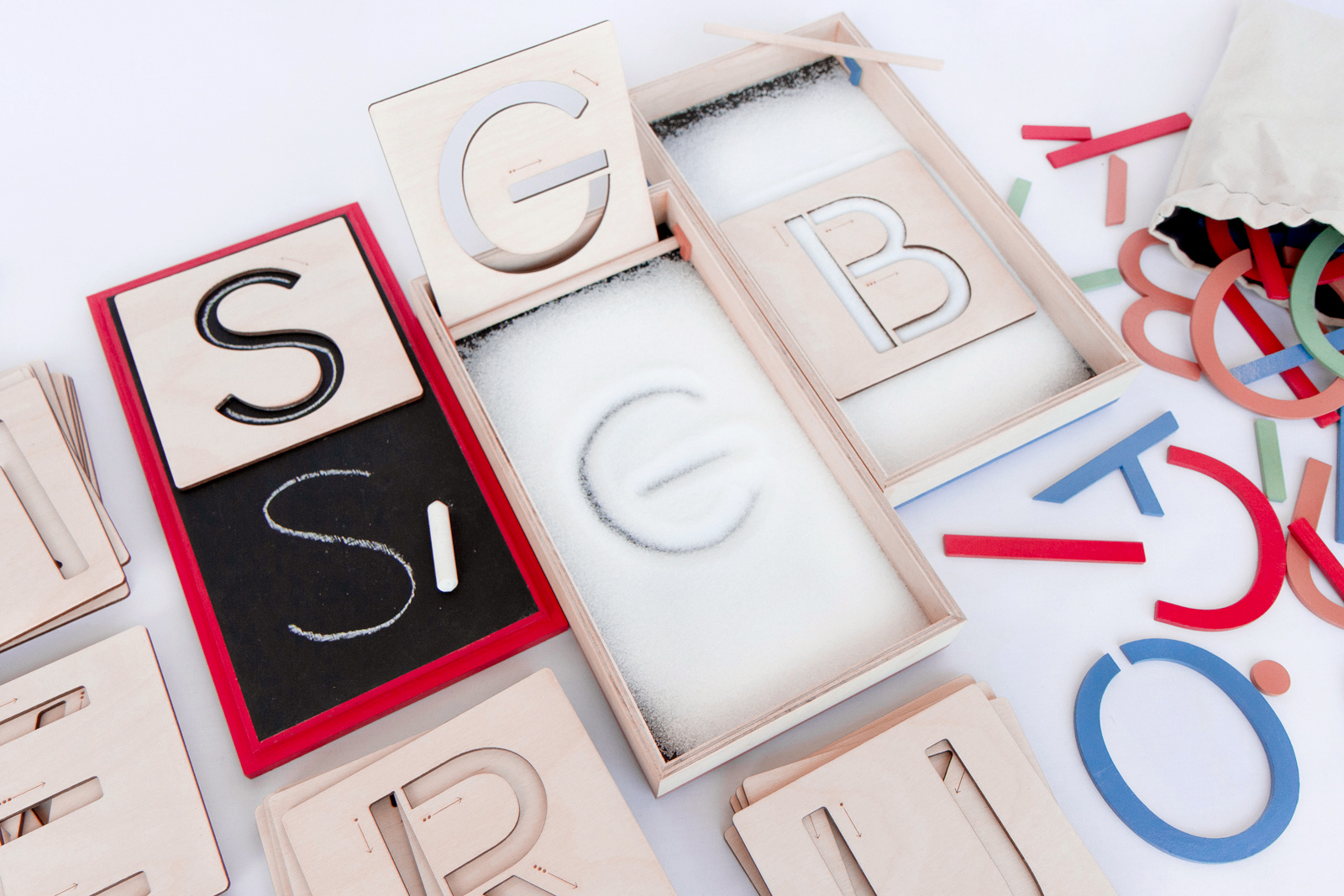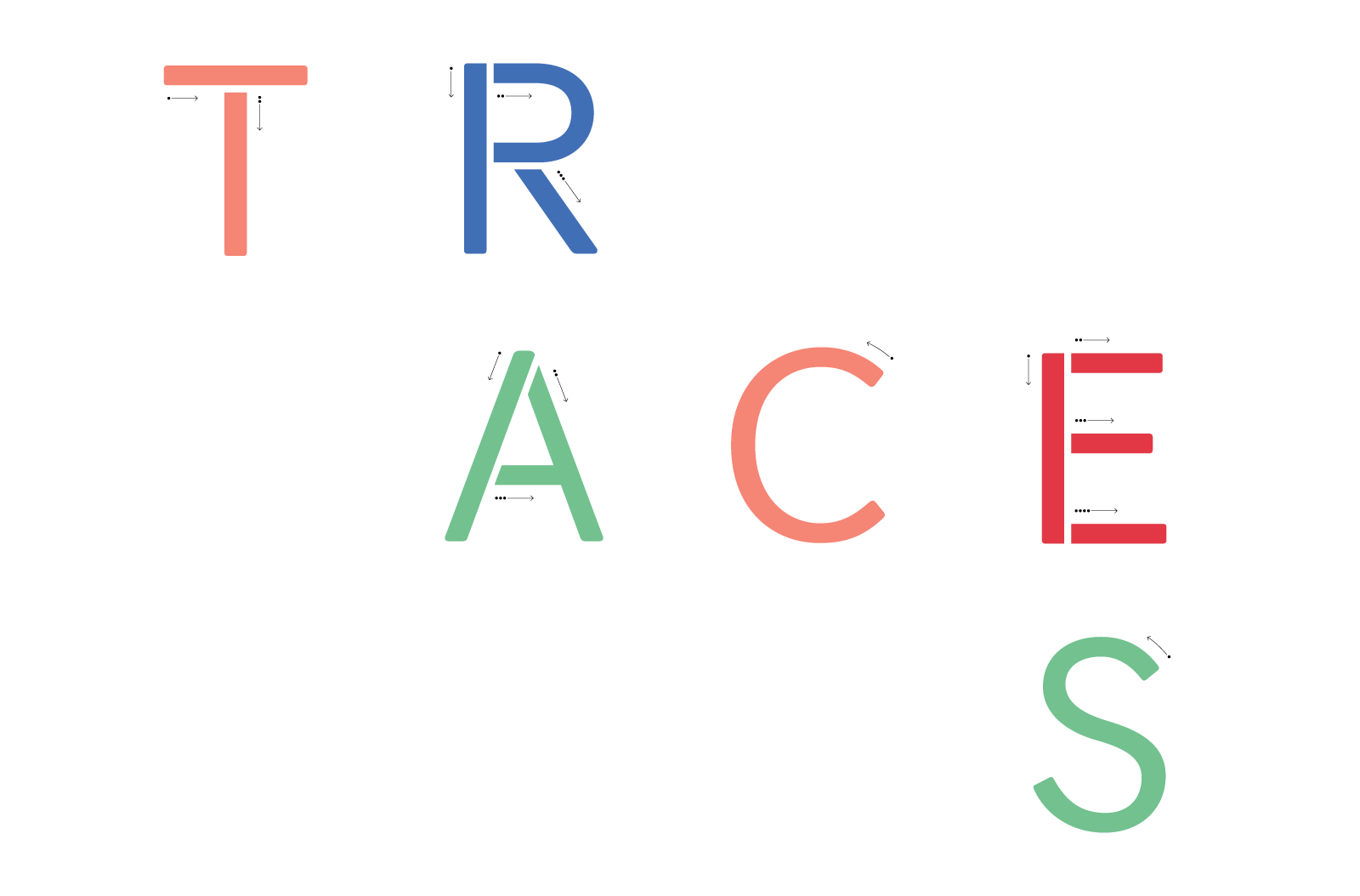
In many classrooms and daycares, early language acquisition tools rely on single-use and non-renewable materials to teach literacy. Traces is a literacy tool designed for adaptability, accessibility, and low waste by emphasizing haptic learning methods and Montessori sensorial materials.

Early prototypes were tested with children ages 3–6 in home and classroom settings. The tool is made to adapt and evolve with each child at different points of their development. With this age group, the Montessori Method highlights sensorial materials, kinesthetic learning, phonemic awareness, and motor control/coordination.
Constructed with natural materials and used with common substrates such as sand, salt, and chalk, Traces is virtually traceless; it can reduce classroom waste and remain accessible to wider socioeconomic or geographic areas.
Constructed with natural materials and used with common substrates such as sand, salt, and chalk, Traces is virtually traceless; it can reduce classroom waste and remain accessible to wider socioeconomic or geographic areas.

Its containers, surfaces, stencils, and shapes facilitate letterform-learning through a variety of haptic interactions that can be paired with auditory associations in the classroom or at home. Some configurations are demonstrated here, including Tracing Tray, Chalk Trace, and Positive Space.





Uppercase characters are altered to maintain stencil rigidity with the least interruption in stroke sequence. Wherever possible, breaks in the letterform coincide with the natural lifting of a finger or writing instrument from the page. Subtle indications of sequence and direction are engraved alongside each cutout, and the tiles work as stencils, reference cards, or puzzles.


